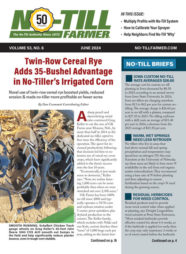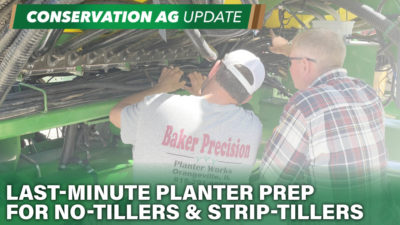Advertise Follow Us
Articles Tagged with ''subsoil''
Take The Pressure Off Your No-Till Soils
Ag engineer Randy Raper offers some helpful hints for no-tillers wanting to tread more lightly for compaction prevention and management.
Read More
Consider Gypsum Applications To Improve No-Till Soil Structure
Benefits could include better aeration and water infiltration and less crusting, leading to enhanced crop emergence and stronger roots.
Read More
Search Underground For Higher No-Till Profits
Managing what’s found below the ground is a key to boosting your above-ground profits.
Read More






